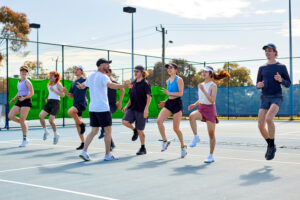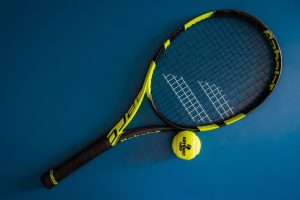4 Things Your Kids Should Learn in Their First Tennis Lessons
Tennis is a vibrant sport for kids in Australia, blending physical activity with engaging gameplay. It enhances fitness, sharpens mental skills, and instils valuable qualities like teamwork, patience, and perseverance. Early tennis lessons provide children with a solid sports and personal development foundation. Beyond mastering the racquet, it’s about building character, forming friendships, and nurturing a lifelong appreciation for staying active. Encourage your kids to try tennis—it could spark a lasting passion and enrich their lives in countless ways.
1. Basic Techniques and Grips
Essential Skills for Young Players
Mastering the fundamentals of tennis is crucial for young players as it sets the foundation for their future in the sport. Proper handling of the racquet and executing strokes improves performance and minimises the risk of injury. Here’s a detailed look at these foundational skills:
- Forehand Stroke: This is often the first stroke taught. The player should stand side-on to the net, with feet shoulder-width apart. The racquet is swung low to high, contacting the ball around waist height. Following through over the shoulder is vital to ensure power and accuracy.
- Backhand Stroke: There are two main types of backhand strokes: the one-handed and the two-handed. The key is to keep the racquet head stable and swing through the ball smoothly. For the two-handed backhand, extra support comes from the non-dominant hand, providing more control.
- Proper Grip:
- Eastern Grip: Often used for forehands, the index finger’s base knuckle is placed on the third bevel of the racquet handle, allowing for a natural and flexible wrist movement.
- Continental Grip: Essential for serves, volleys, and slices, this grip involves placing the base knuckle of the index finger on the second bevel. It allows for greater wrist snap and precision in shots.
- Serve Techniques: Starting with the continental grip, the player tosses the ball into the air and strikes it in an upward motion, aiming to hit the ball at its highest point. This technique requires precise timing and body coordination to deliver effective serves.
These core skills are not just techniques but the building blocks that young players will rely on as they progress in their tennis journey. Coaches and parents must ensure these basics are well understood and practised regularly.
2. Understanding the Court and Rules
Layout and Scoring System
A clear understanding of the court layout and the game’s basic rules is essential for young tennis players. This knowledge helps them navigate the space effectively and enhances their strategic thinking during play. Let’s break down the different parts of the court and the fundamentals of scoring:
- Court Layout:
- Baseline: The line at each end of the court, where players often serve from.
- Service Boxes: Located on either side of the net, these are the areas where a successful serve must land.
- Doubles and Singles Sidelines: These lines define the width of the court, which varies between singles and doubles.
- Net: The central divider that the ball must pass over during play. It’s lower in the middle and higher in the posts.
- Basic Rules:
- Scoring: Matches are divided into sets and sets into games. The game scoring starts at zero (loving) and progresses to 15, 30, and then 40. Winning by two clear points after 40 is necessary to claim a game.
- Serving: Players must serve diagonally into the opponent’s service box and alternate between their court’s left and right sides at each point.
- Faults: A serve that fails to land within the opposite service box or hits the net is a fault. Two consecutive faults result in the opponent winning the point.
Understanding these elements helps young players grasp a match’s physical boundaries and objectives, forming a baseline for all future skills and strategies.
3. Movement and Coordination Development
Building Physical Literacy
Enhancing balance, agility, and overall movement is crucial for young tennis players. These physical attributes are vital for effective play and help in preventing injuries. Specific exercises designed to improve these skills can significantly affect how a child performs on the court. Here’s a closer look at the key activities:
- Balance Exercises:
- Single-Leg Stands: Players stand on one leg, holding the position for 30 seconds before switching. This can be advanced by closing the eyes or standing on a cushion.
- Line Walks: Walking slowly along a straight line, one foot in front of the other, to simulate a tightrope walk, enhancing balance and concentration.
- Agility Drills:
- Ladder Drills: Players perform various footwork exercises through the squares using a ladder laid flat on the court. This improves quick foot movements and coordination.
- Cone Drills: Setting up cones in various patterns and having players run through the setup can enhance directional changes and speed.
- Coordination Development:
- Ball Tosses: Tossing a tennis ball against a wall and catching it with alternate hands. This simple exercise improves hand-eye coordination and reaction times.
- Skipping Rope: A classic that is excellent for timing and rhythm, helping with foot coordination and cardiovascular fitness.
Incorporating these exercises into regular training sessions gives young players the tools to navigate the court more effectively. Regular practice can lead to evident improvements in how they manage their movements during matches.
4. Sportsmanship and Enjoyment
Learning to Play with Respect and Fun
Fostering sportsmanship and enjoyment in tennis is essential for young players, helping them develop a lifelong appreciation for the sport. Emphasising fair play, respect for opponents, and joy in playing are pivotal in shaping positive attitudes. Here are some ways to encourage these values:
- Promoting Fair Play:
- Encourage Handshakes: Teaching kids to shake hands with their opponents and the chair umpire after matches, regardless of the outcome, promotes respect.
- Understanding the Rules: Ensuring players know and follow the rules of tennis, teaching them integrity and fairness on the court.
- Building Positive Attitudes:
- Focus on Effort, Not Just Wins: Congratulate children for effort and improvement, not just victories. This shifts the focus from outcome to growth and learning.
- Group Activities: Incorporate fun team-based drills and games in practice sessions to build camaraderie and lessen the pressure of competition.
- Finding Joy in the Sport:
- Variety in Training: Mixing routines with different activities and games keeps practice sessions lively and enjoyable.
- Celebrating Achievements: Recognising milestones, no matter how small, boosts morale and enjoyment.
Serving Up Success: Your Pathway to Tennis Excellence
As we wrap up our exploration of what young players should learn in their first tennis lessons, it’s clear that the foundation of tennis involves:
- Mastering basic techniques and grips.
- Understanding the court layout and rules.
- Developing movement and coordination.
- Fostering sportsmanship and enjoyment.
Each element is crucial in nurturing well-rounded, skilled, and happy players.
Consider the benefits of structured training at a dedicated facility for parents and guardians looking to support their children’s tennis journey. Evolve Tennis Academy offers a supportive environment where young athletes can grow their skills, enhance their physical fitness, and learn the values of fair play and respect.
Enrolling your child at Evolve Tennis Academy is a fantastic way to ensure they receive quality coaching and support. It’s a place where budding tennis players flourish, not only in their skills but also in their love for the game. Join us at Evolve, where your child’s tennis potential can unfold.





